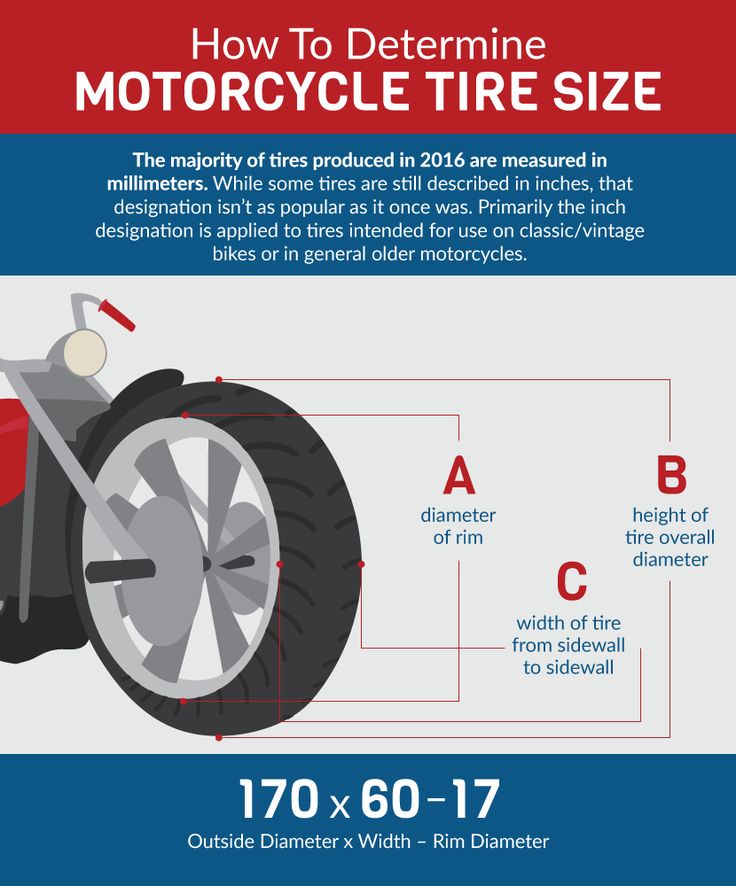More than a few of us have spent time looking for the placard with a vehicle’s tire pressure recommendations. And more than a few consumers have looked at their owner’s manual or that elusive placard and wondered why the pressures there are different from the maximum pressure on the tire’s sidewalls.
How do the automobile manufacturers and their tire suppliers come up with those numbers?
It starts with the load the vehicle is designed to carry and the size of the tires installed on it. Worldwide, several organizations exist with the primary purpose of establishing and publishing interchangeability standards for tires, wheels, valves and allied parts.
In the U.S., this standardizing body is the Tire and Rim Association (TRA). Its European equivalent is the European Tire and Rim Technical Organization (ETRTO). The Japanese Automotive Tire Manufacturers Association (JATMA) has that respon-sibility in Japan. There are other similar organizations, but those three are the major players.
None of the major standardizing organizations is government mandated or regulatory. The organizations, and the standards that they set, are all voluntary. There is no legal obligation for any tire or auto manufacturer to abide by the standards. However, for practical and legal liability purposes, it simply makes sense to follow the standards and all vehicle and tire manufacturers use them.
While TRA, ERTO and JATMA all use slightly different protocols, they consult with each other and their standards are all very close. These organizations establish a range of standard dimensions for each tire size so that the proportions of all tires of a particular size are very similar. This assures that all tires of a specific size are interchangeable, at least in terms of their physical dimensions.
They also set each tire’s “load curve,” which is the relationship between inflation pressure and the tire’s maximum load carrying capacity. Like the size standards, there are some slight variations among the different organizations’ load curves, but they are not significant.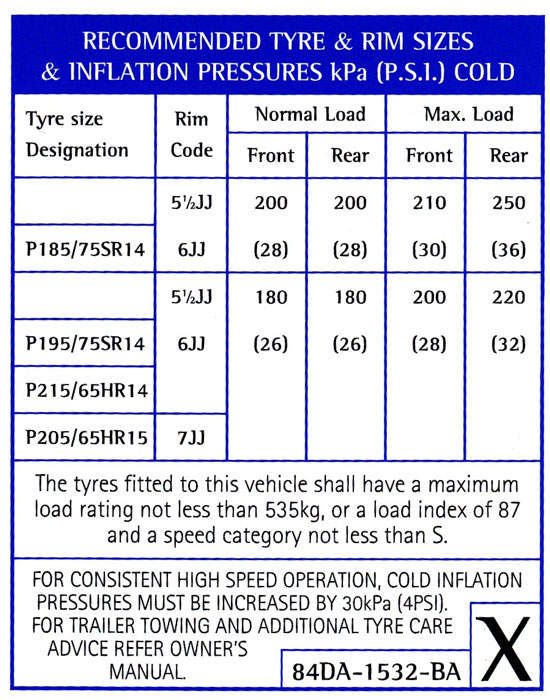
Part of each load curve standard is the point at which the load curve stops going up. For TRA p-metric standard load tires, it is at 35 psi. Equivalent ETRTO and JATMA tires peak at 36 psi. Interestingly, all of the standardizing organizations agree that standard load passenger car tires can (and should) use optional higher inflation pressures (44 psi or 51 psi) for certain circumstances such as high speed driving. However, these higher inflation pressures generally provide no increase in load carrying capacity and in some circumstances specify a reduction in load for high-speed use.
So the auto manufacturer knows what a vehicle weighs and knows how much weight can be added in fuel, passengers, cargo, etc. They can look at the load curve of the particular size that they have selected. To this number, auto manufacturers usually add a safety factor of around 10%.
For passenger cars, SUVs and light trucks, the load curve number launches a series of negotiations.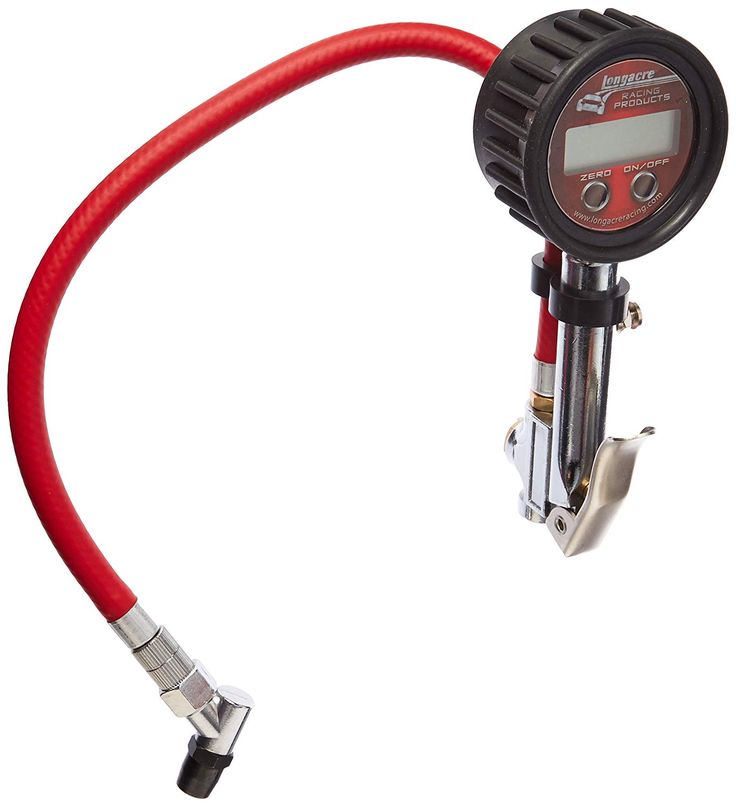 The engineers responsible for the vehicle’s handling are likely to lobby for additional inflation pressure to improve handling. Similarly, lower rolling resistance results in better fuel economy and leads to demands for higher inflations. Cars likely to see high-speed bring with them engineers insisting on more air pressure. On the other hand, ride considerations are an important consideration and that calls for lower inflation pressures.
The engineers responsible for the vehicle’s handling are likely to lobby for additional inflation pressure to improve handling. Similarly, lower rolling resistance results in better fuel economy and leads to demands for higher inflations. Cars likely to see high-speed bring with them engineers insisting on more air pressure. On the other hand, ride considerations are an important consideration and that calls for lower inflation pressures.
Today, the results of these nego-tiations are inflation pressures typically in the 32 psi to 35 psi range. If the champions of improved ride had their way, the 26 psi to 28 psi range that was common a few years ago would be more common. The safety factor of the higher inflation pressure seems to be carrying the day with automakers. After all, no one wants a repeat of the fiasco of when Ford set the recommended pressures on first generation Explorers at 26 psi.
In that situation, recommended inflation pressures too low to provide an adequate safety factor were frequently combined with poor maintenance, overloading and high ambient temperatures to produce a series of often-deadly accidents (250 deaths and 3,000 serious injuries were attributed to the problem).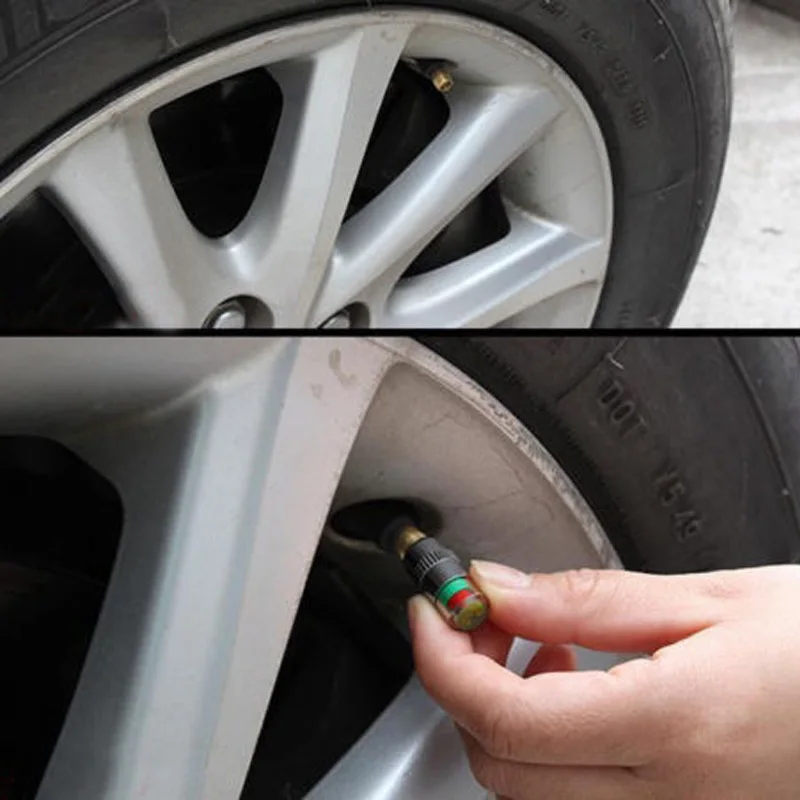
Other factors keep the process of determining recommended pressures from being completely cut and dried.
Aesthetics is often a big factor when automakers choose tire sizes, and the emphasis on style versus substance can complicate the negotiations. The popularity of extreme low-profile tires has required significant increases in recommended pressures. Cars likely to see significant high-speed often force auto manufacturers to lower load limits, move to higher tire speed ratings such as W or Y, or go to recommendations of up to 51 psi.
Although the process starts with load and seems like it would be simple, nothing is etched in stone.
The recommended pressures go onto the vehicle’s tire information placard once the engineers make their final decisions. Beginning in 2003, federal regulations required automobile manufacturers to place tire information placards in a standardized location and follow a common format. The tire information placards identify the OE tire sizes and inflation pressures (including the spare), along with the vehicle weight capacity.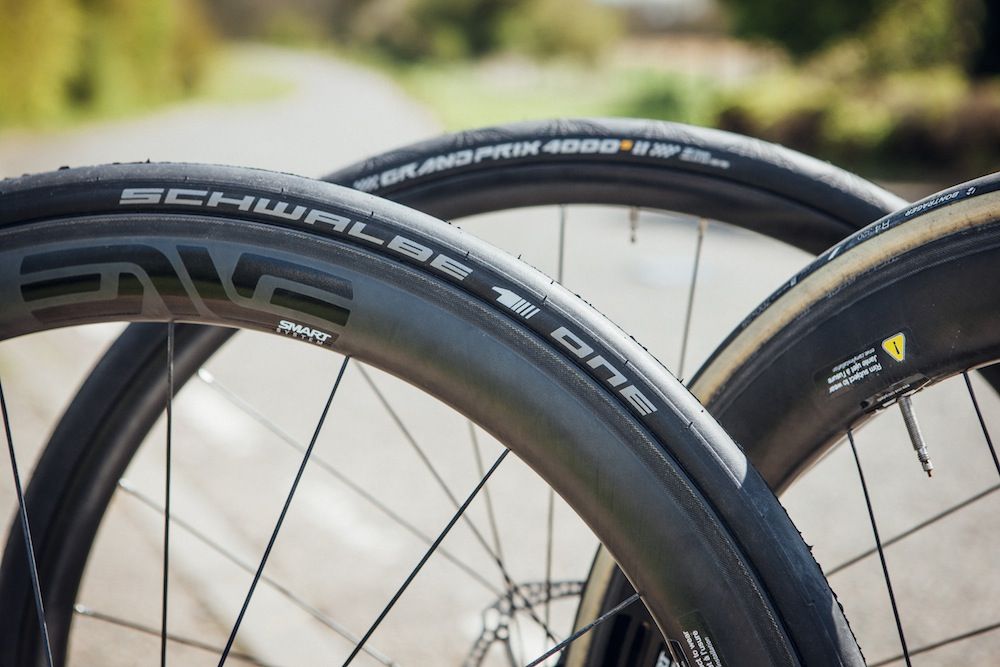
All new vehicles must now have a placard located on the driver’s side doorjamb (the B-pillar). If a vehicle does not have a B-pillar, then the placard is to be placed on the rear edge of the driver’s door. And if the vehicle does not have a B-pillar and the driver’s door edge is too narrow, the placard is to be affixed on an inward facing surface next to the driver’s seating position.
In addition to providing the OE tire size(s) and recommended inflation pressure(s), vehicle manufacturers must also identify vehicle load capacity with the following sentence: “The combined weight of occupants and cargo should never exceed XXXX pounds.”
For vehicles produced between 1968 and 2003, the original tires size(s) and inflation pressures were listed on a placard usually found on the driver-side door or doorjamb, rear passenger doorjamb, fuel filler door, glove box or center console door or inside the engine compartment.
Sometimes alternate pressures based on load or speed conditions are also provided.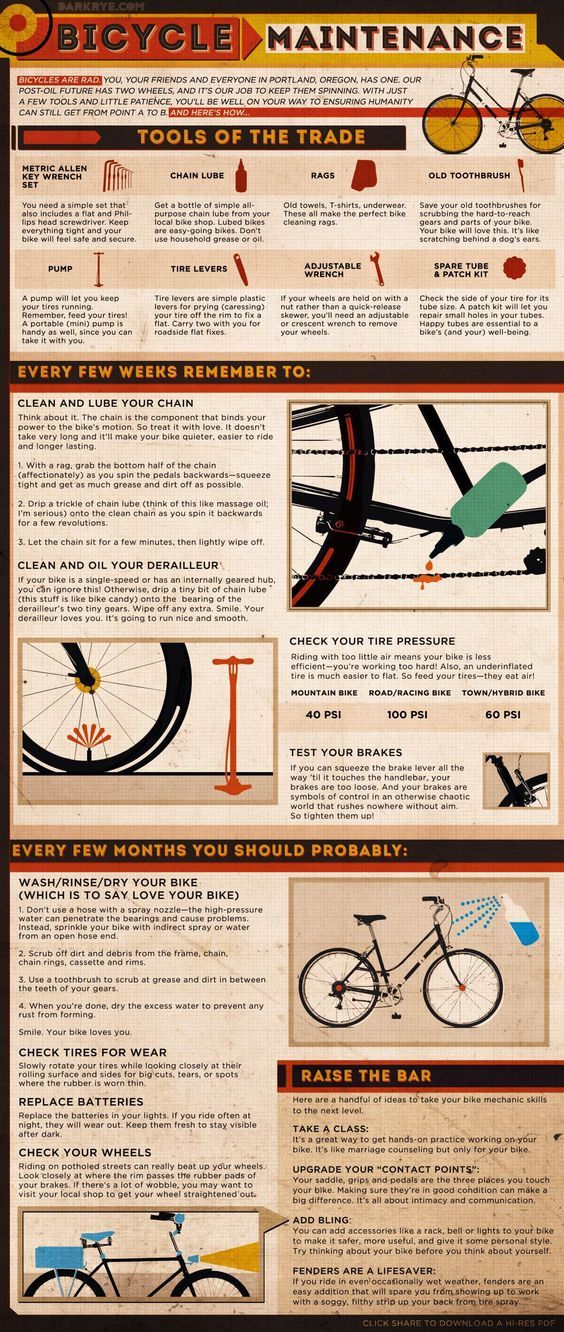
Consumers are often confused because federal safety regulations also require tire sidewalls to contain information about a tire’s maximum load capacity and maximum inflation pressure. For P-metric standard load tires, the maximum pressure listed on the sidewall will be 44 psi or 51 psi, even though the pressure where the maximum load occurs is 35 psi or 36 psi. On the sidewall, this would look like “Maximum Load XXXX lbs. Maximum Pressure YY psi.”
A few manufacturers interpret the regulation to mean the maximum load and the corresponding inflation pressure (“Maximum Load XXXX lbs. at YY psi”). Either way, too often consumers see the maximum inflation pressure on the sidewall and believe that is the correct pressure for their car.
Look at some of the online forums and you will see that the arguments about relying on the placard or the tire sidewall can be animated.
Regardless of the information on the tire sidewall, assuming the right size tire is installed on the vehicle the placard is the correct information.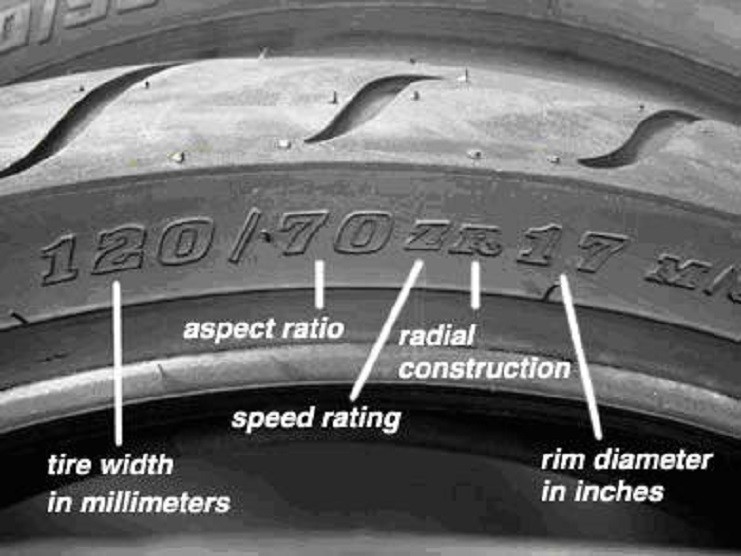
While the maximum load of the vehicle is the primary factor in establishing the recommended pressures, many other considerations went into the calculations. Don’t make changes lightly. Varying from the vehicle manufacturer’s recommendations requires careful consideration of why you want to make the change and the possible safety implications.
In this article:tire technology
Maintaining correct tire inflation pressure is very important since it helps optimize tire performance and fuel economy while over-inflated tires are just as problematic as under-inflated ones.
In fact, driving with under-inflated tires is one of the biggest causes of tire failure, according to the National Highway Traffic Safety Administration.
Besides, under-inflated tires can cause many other problems such as wearing out more rapidly, handling poorly and reducing fuel efficiency.
In addition, over-inflated tires are more susceptible to damage from road irregularities, and this also creates a bumpier ride.
Overfilling your tires is just as dangerous as under-filling them, so it’s important you know what is recommended for your vehicle.
This article will give you everything that you need know about your recommended tire pressure. These include:
Buy Pressure Gauge at Amazon
Recommended tire pressure, where to find it?Since tire pressure is so important to your safety and your car’s overall performance, it is important to know which level of tire pressure is right for your vehicle.
In fact, how much air pressure your tires need depends on several factors, including the type of vehicle, the type of tire and the intended use of the vehicle etc.
Air pressure in tires is measured in pounds per square inch or PSI.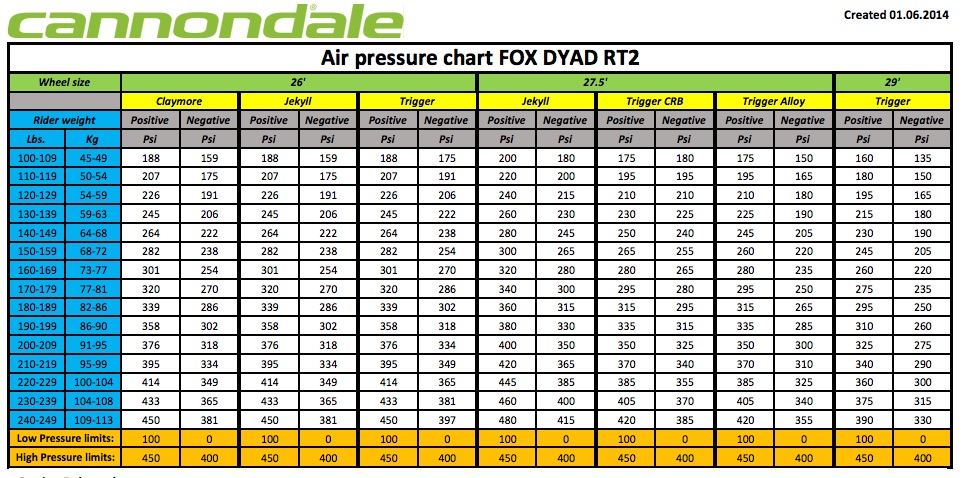 You can find your tire pressure both inside your car and on the sidewall of the tire.
You can find your tire pressure both inside your car and on the sidewall of the tire.
You could find the manufacturer’s optimum or recommended tire pressure for your car on a sticker in the door jam, or in your owner’s manual. Some car models even place the stickers on the trunk lid, in the console or on the fuel door. For best results, look for a placard on the inside of the driver’s door, like the example in the photo below.
How to find maximum tire pressure on the sidewall of your tiresSomewhere on the sidewall of your tire, just below the big, bold letters of the manufacturer, for example, you might have noticed the words ‘Max. Press. 35 PSI.’ (pounds per square inch).
That number tells you the maximum cold pressure needed for your tire to carry its maximum load.
Most typical tires require about 32 to 35 pounds per square inch (PSI) of air, says Rod Tate, owner of highly rated Colony One Auto Center in Stafford, Texas.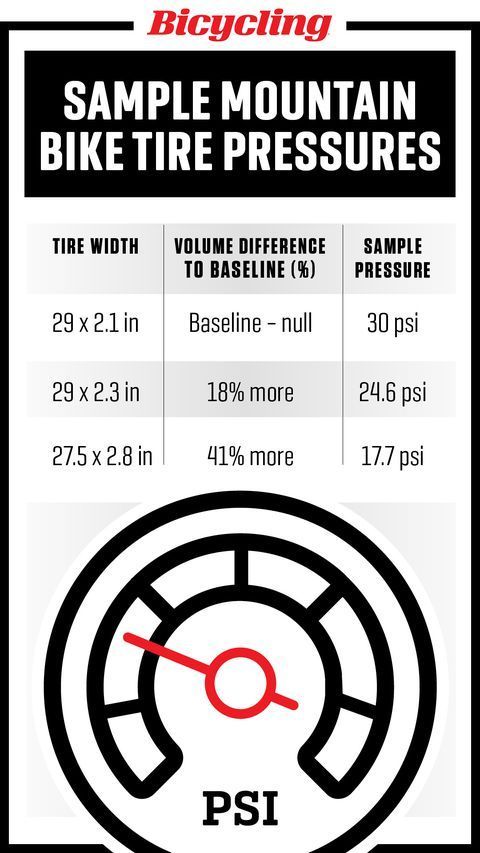
Large trucks require much larger tires with PSIs of 50 to 60. Heavy-duty vehicles can go even higher. For example, tire in the picture below requires 41 pounds per square inch of air.
However, the tire’s maximum pressure is NOT necessarily the most suitable pressure for every vehicle upon which the tire can be used (almost all vehicle manufacturers’ recommended tire inflation pressures are less than the tires’ maximum pressure).
You really should follow the recommended pressure printed somewhere inside your car or in the manual rather than the maximum pressure. In the next section, I will explain why.
Buy Pressure Gauge at Amazon
Why is maximum tire pressure not the best?If you insist on inflating your tires to the max PSI, there will be more likely that two things below will happen
Since tires inflated to the max cannot give as much on the sidewall, you might see superior cornering, but it could be at the risk of your braking threshold. One quick corner and your back end could slide out.
One quick corner and your back end could slide out.
When your tires are inflated too much, the rubber rounds out at the top of the tire when you are driving, and the center will quickly wear out. You will also reduce your traction and you could even cause a blowout.
Therefore, maximum pressure is not the best, rather, recommended pressure is. I need to repeat here that the pressure listed on the sidewall is a maximum pressure only, but not a recommended pressure. Instead, you should use the air pressure recommended in the vehicle’s owner’s manual or tire information placard label.
How to check your tires pressure?Therefore, maximum pressure is not the best, rather, recommended pressure is. I need to repeat here that the pressure listed on the sidewall is a maximum pressure only, but not a recommended pressure.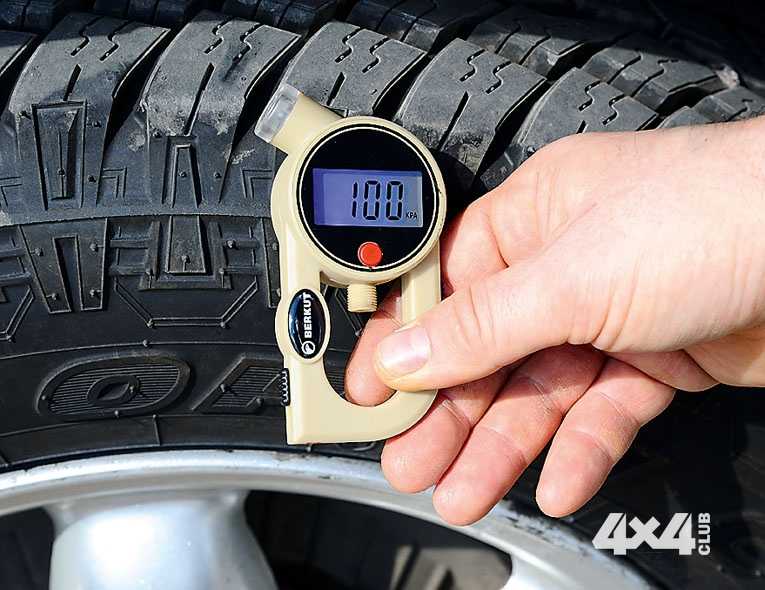 Instead, you should use the air pressure recommended in the vehicle’s owner’s manual or tire information placard label.
Instead, you should use the air pressure recommended in the vehicle’s owner’s manual or tire information placard label.
After knowing the most appropriate pressure for your car tires, you should check whether your tires have such pressure. In addition, checking the pressure of your tires regularly is one of the most important – and most often overlooked – regular maintenance that you should do to ensure your safety and quality of your driving. Monitoring the amount of air in your tires will let you know if you have a small leak and can help you avoid an unexpected flat tire.
Frequently checking your PSI becomes even more important in the fall and winter, when outside temperatures drop and weather conditions fluctuate causing your tires to lose air more quickly. Generally speaking, your tire will gain or lose one PSI for every 10-degree change in temperature, which means if you have a sudden drop of 30 degrees, you could lose three PSI overnight. If your tires were already low, this could cause tire damage, steering problems or even a flat tire.
Some experts recommend that you should check the air pressure every time you refuel; others say once a month is sufficient.
How to check tire pressure properly? Checking tire pressure is easy. You can do it right at home or at the gas station. Just be sure you check the pressure when your tires are cold, or have not been driven in several hours. This will give you the most accurate reading.
The most important piece of equipment you need is an accurate tire pressure gauge. You can find battery-operated digital gauges, or more traditional stick-type gauge found at most gas stations. A good gauge should not set you back more than $15 – a worthwhile investment for a longer life for your tires.
Buy Pressure Gauge at Amazon
Make sure you have your manufacturer’s PSI handy when you are checking your tire pressure, and then follow these steps:

By checking tire pressure once a month, you will get a good idea how they are performing. If your tires are fairly new and continue to leak air, you should consult your dealer or mechanic. You may have a faulty valve or other damage that is difficult to detect which could unfortunately result in the need to replace the tires completely. But with proactive maintenance, you could catch an issue before it becomes a problem, and just end up needing a small repair.
But with proactive maintenance, you could catch an issue before it becomes a problem, and just end up needing a small repair.
Often, it is hard to spot an under-inflated tire until it is too late – in other words, it is completely flat. Of course, you could carry a gauge around at all times to measure the pressure, but that is not exactly convenient. Instead, watch for these signs and symptoms of tires that are under-inflated.
When your tires are under-inflated, your ride can be less smooth than usual. You may even find that it takes longer to brake.
When a tire is not inflated properly, it wears down more quickly. If you notice that one or all of your tires are wearing out faster than usual, it may be because they are under-inflated.
Tires that are under-inflated can make your vehicle quiver and shake, which is not a pleasant driving experience. Under-inflation can even cause tires to become misaligned, with comes with it is own variety of problems.
Under-inflation can even cause tires to become misaligned, with comes with it is own variety of problems.
These are all things that you need to know about recommended pressures of your car tires. After reading this article, you will never confuse about the right pressure of your tires and will know how to check it.
Please share your ideas with me if you have other tips for this.
What should be the pressure in the tires of the car? Does it need to be adjusted and what will happen if the pressure is changed in one direction or another?
Two friends conversation:
- hello lowered the wheel!
— Absolutely?
- No, only from below ...
Humor from the Web
Let's start with platitudes.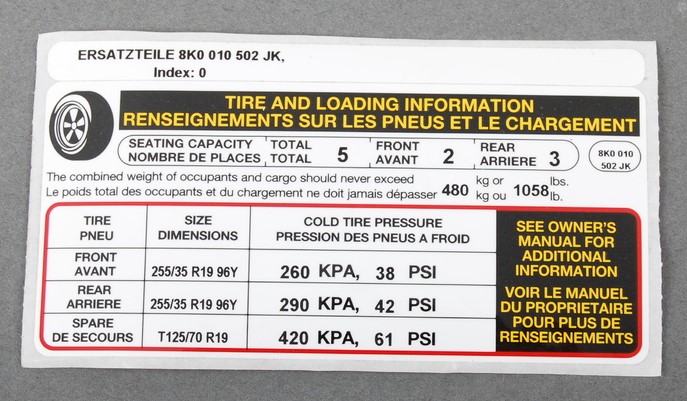 The pressure must be as specified by the vehicle manufacturer. And since the average modern driver usually does not have such information, especially for him, a "cheat sheet" with the necessary numbers is hung on the middle pillar on the driver's side or on the gas tank hatch cover.
The pressure must be as specified by the vehicle manufacturer. And since the average modern driver usually does not have such information, especially for him, a "cheat sheet" with the necessary numbers is hung on the middle pillar on the driver's side or on the gas tank hatch cover.
A relatively rare solution: the "reminder" is located on the gas tank cap.
A relatively rare solution: the "reminder" is located on the gas tank cap.
An important point: pressure should be measured only on cold tires. By the way, especially for pedants: cold tires are those on which the car has been without movement for at least 5 hours.
This "cheat sheet" nestled on the driver's door. An example of how tire pressure recommendations change depending on tire size.
This "cheat sheet" nestled on the driver's door.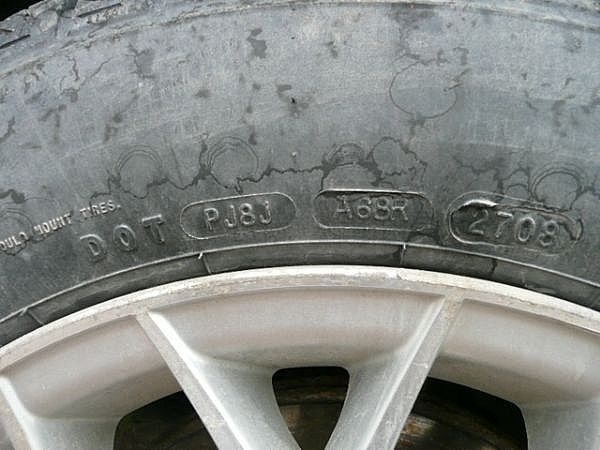 An example of how tire pressure recommendations change depending on tire size.
An example of how tire pressure recommendations change depending on tire size.
Since car manufacturers allow the use of tires of different sizes, the pressure may also be different. In addition, the pressure in the front and rear tires has the right to both differ and be the same.
And here there is no difference in recommendations: what is in front, what is behind is the same.
And here there is no difference in recommendations: what is in front, what is behind is the same.
Related materials
Seasonal tire change: everything car owners need to know
Reduced pressure leads to an increase in tire deformation, more heating during wheel rolling, accelerated wear of the outer tread tracks. Perhaps even a violation of the integrity of the frame. As a result, fuel consumption increases. If you hit a hole in the road, the likelihood of damage to both the disk and the tire is higher.
If you hit a hole in the road, the likelihood of damage to both the disk and the tire is higher.
Increased pressure is an overstrain of the cords, increased wear of the middle part of the tread. In addition, when driving on a bad road, the shocks that are transmitted to the suspension and body will become more noticeable for riders. When hit in a pit, the likelihood of a tire burst increases.
Uneven pressure on all four wheels is the worst thing! At the same time, the car, while driving, inevitably leads the wheels with lower pressure to the side - in fact, sideways movement begins.
Tube tires of the past required a weekly check, especially before the advent of butyl tubes. Then the pressure began to be checked less often, and nowadays, as a rule, they are limited to visual inspection.
Tube tires of the past required a weekly inspection, especially before the advent of butyl rubber tubes. Then the pressure began to be checked less often, and nowadays, as a rule, they are limited to visual inspection.
Then the pressure began to be checked less often, and nowadays, as a rule, they are limited to visual inspection.
In a good way, you need to check the tire pressure at least once a month. And before a long journey - just a must.
Related materials
Budget Tire Compressor Test: Wrong Bees
The air pressure in an enclosed space changes by approximately 0.1 bar for every 10 degrees of temperature change. This allows, having installed summer wheels in April, not to worry about the pressure in them until the end of August, when the air temperature begins to drop. Having pumped up the wheels at the end of summer, you can already reach the seasonal shift. But having installed winter tires in October, with the first frosts, you should check the pressure a couple more times: when the temperature drops to minus ten, fifteen, and when it goes over minus twenty. But from the middle of winter until the moment of changing the wheels to summer ones, there is again a period of relaxation.
Electronics are increasingly thinking for us. Now, a tire pressure monitoring system is being installed on parts of production cars. Moreover, some simply read the wheel speeds through the ABS sensors: after all, a flat tire rotates faster, since its radius is smaller than that of inflated wheels. There are also sensors that evaluate the amount of air pressure and send information via radio to the "brains" of the car. Such devices can also be purchased separately: sensors - in the wheels, and the receiver - in the car.
By the way, a lot depends on the road you are going to take.
The operating instructions supplied with the vehicles indicate that it is recommended to increase the pressure by 0.2-0.3 bar before driving for a long time on expressways. We advise you to follow these recommendations on all cars: it will not get worse.
The operating instructions supplied with the vehicles state that it is recommended to increase the pressure by 0. 2-0.3 bar before driving for a long time on highways. We advise you to follow these recommendations on all cars: it will not get worse.
2-0.3 bar before driving for a long time on highways. We advise you to follow these recommendations on all cars: it will not get worse.
I don’t want to discuss overload: this, you see, is not the case. But, unfortunately, many deliberately overload the car several times a year, not only stuffing the interior and trunk to the eyeballs, but also attaching a trailer, which additionally loads the rear wheels of the tractor. In such cases, we advise you to increase the pressure in the rear tires by at least 0.2–0.3 bar. Tires will only thank you.
If you doubt the accuracy of your pressure gauge, then we advise you to check it immediately after leaving the tire shop, where you were set the obviously necessary pressure, to measure it with your own measuring device (separate or as part of the compressor). So you determine whether your pressure gauge is "lying" a lot. For the future, right on the dial, you can put a mark of the correct value.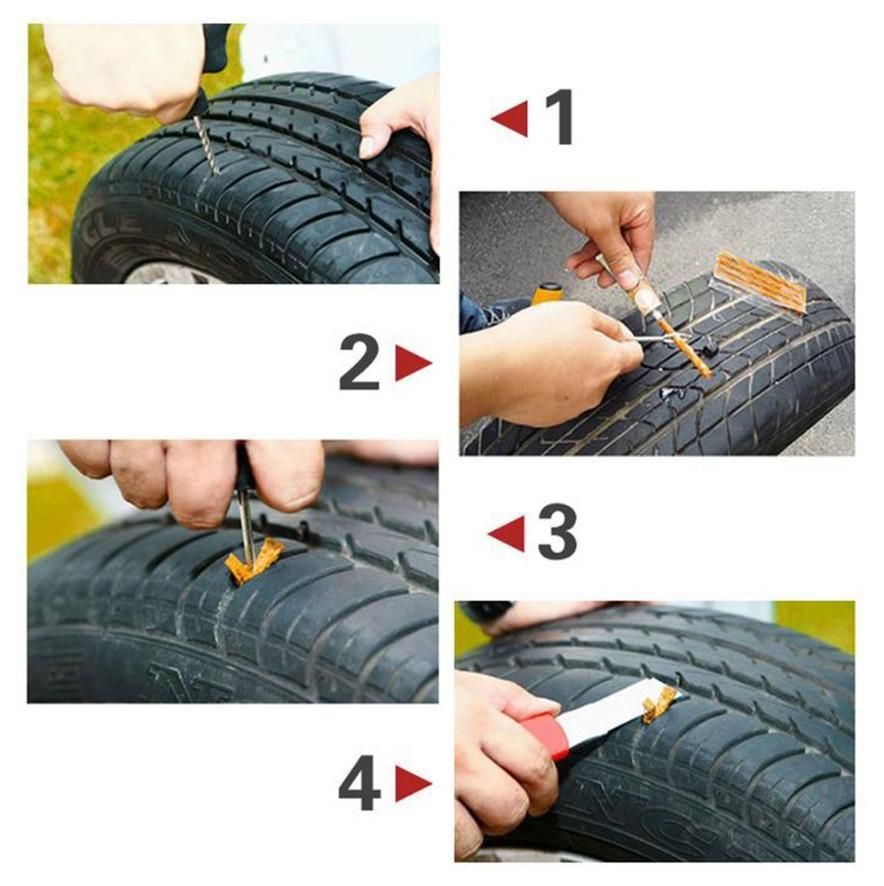
Of course, it is better to have your own, known to be correct pressure gauge, but such a toy is not cheap.
Of course, it is better to have your own, known to be correct pressure gauge, but such a toy is not cheap.
If terrible ice caught you on summer tires, say, in the country, and you need to drive some distance along an absolutely icy road by any means, then you should reduce the tire pressure to approximately 1.6 bar. Is it bad for tires? Yes. But an accident will cost more. In addition, in such a situation, one does not have to wait for high speed, and overheating of tires at near-zero temperatures most likely will not happen.
Everyone knows what caused the excellent maneuverability of Soviet tanks? That's right: wide tracks, that is, low pressure on the ground. We, having an ordinary, non-all-wheel drive car, are also able to provide it with a similar cross-country ability. If the wheels of the car sink into sand, snow or sticky mud, then it makes sense to lower the tire pressure. And not only driving, but also driven wheels.
If the wheels of the car sink into sand, snow or sticky mud, then it makes sense to lower the tire pressure. And not only driving, but also driven wheels.
We know from experience that you can often get out of the "black spot" by reducing the pressure to 1.2 bar.
We know from experience that it is often possible to get out of the "black hole" by reducing the pressure to 1.2 bar.
In a very critical situation, if you know that you have a fairly narrow disc and a relatively wide tire (such a wheel has a lower chance of self-disassembly), you can reduce the pressure to 1.0 bar.
Stalled on wet grass? Try to relieve pressure.
Stalled on wet grass? Try to relieve pressure.
Pressure reduction is also useful in other cases - for example, to overcome diagonal hanging. If you reduce the pressure in the wheels on which the car rests, their height will decrease and there will be a chance to “hook” on the suspended wheels.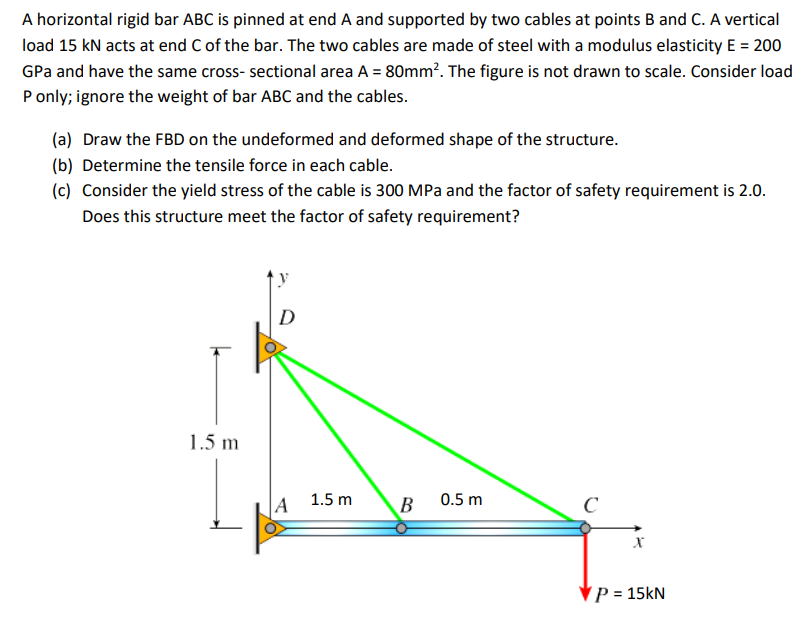 Of course, if the car has already laid down on the bottom, then it is too late to reduce the pressure - this will only interfere.
Of course, if the car has already laid down on the bottom, then it is too late to reduce the pressure - this will only interfere.
A concrete example of the effect of pressure on flotation. In this case, the pressure is very low, and the contact patch of the wheel with the coating is much larger than that of a conventional car.
A concrete example of the effect of pressure on patency. In this case, the pressure is very low, and the contact patch of the wheel with the coating is much larger than that of a conventional car.
In general, the pressure in tires, as well as in vessels, is better to keep normal. Any deviation has its negative consequences. Tell us, have you ever had to adjust tire pressure to improve flotation?
Tire pressure: your norm
Tire pressure: your norm
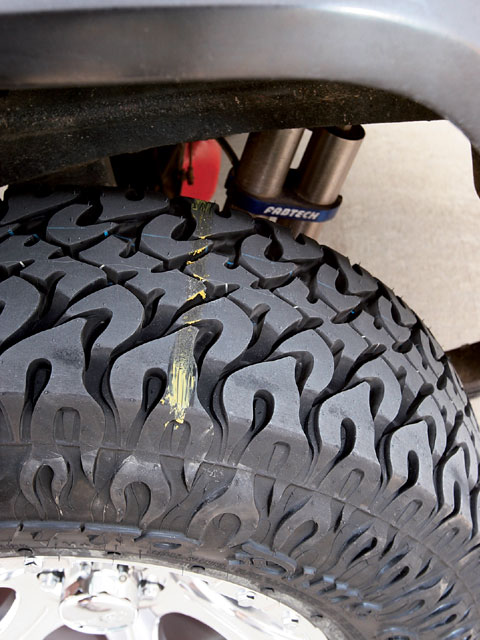 Recommendations
Recommendations
Regular monitoring of the level of “atmospheres” in tires is a matter of driving safety, tread wear rate, fuel consumption and driving comfort. Unfortunately, many car owners do not attach the necessary importance to this simple and important “ritual”, neglecting it in every possible way. This article will help you understand the nuances of proper tire inflation and answer common questions from novice drivers.
(ℹ) The correct tire pressure is determined by the car manufacturer, taking into account all its features and characteristics, for each specific brand, model and operating conditions - individually.
Recommendations for optimal tire inflation take into account the weight of the machine, the loads on different axles and often involve changing the following operating parameters:

How can I find out the factory tire pressure?
You can find the manufacturer's recommended parameters for tires:
⚠️ Important! The recommended tire pressure for the correct operation of the vehicle is determined directly by the automaker. Do not confuse with the marking on the sidewall of the tire "MAX PRESSURE" - this is the maximum permitted level at which the tire will not receive damage to its structure. Often the marking is indicated in psi or kPa.
Where is the factory tire pressure chart located?
Depending on the brand of car, this information, as well as recommended tire sizes, may be located:
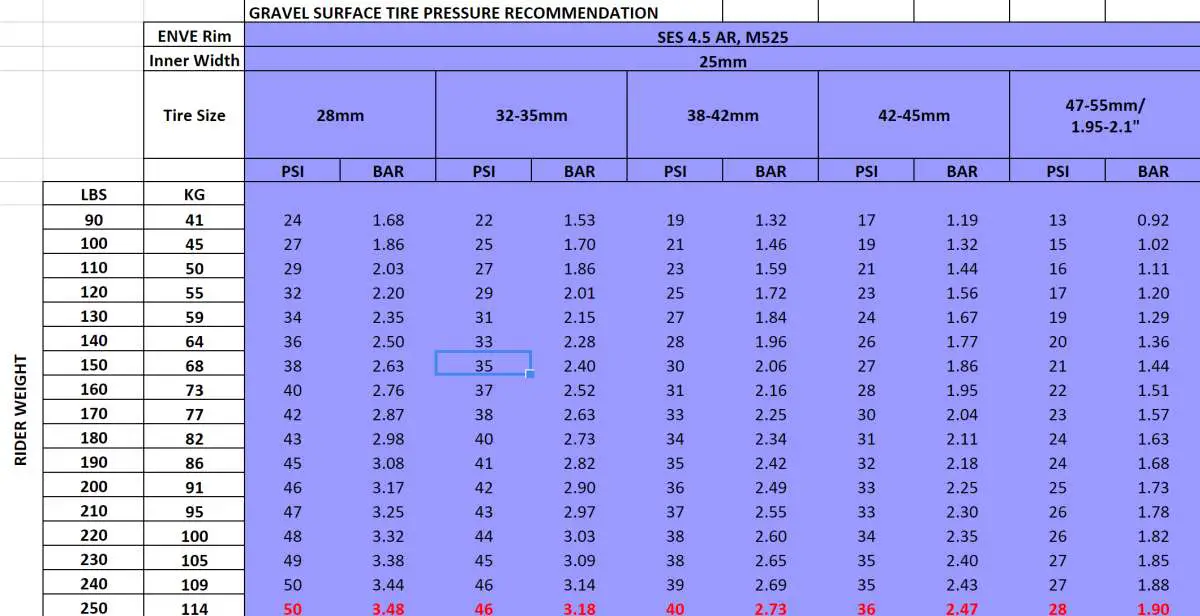
First you need to understand the units of measurement. For different car manufacturers and on different measuring instruments, the designations may differ.
In Ukraine, as a rule, measurements are recorded in physical atmospheres (atm, atm) or in bars (bar, bar). In the US and UK it is in pounds per square inch (psi). It is also measured in Pascals (kilopascals - kPa) according to the international system of units (SI).
For a convenient conversion of the values used for measurements (psi, kPa, atm, bar), we suggest using the summary table below.
*Since atm and bar have a slight difference in values (1 bar = 0.986923 atm), they are summarized in one column.
**Values are rounded to the nearest tenth.
(ℹ) The pressure gauge is a basic and indispensable tool for measuring tire pressure. It is installed on each autocompressor and helps to determine how inflated the tire is.
It is installed on each autocompressor and helps to determine how inflated the tire is.
Portable pressure gauges are available in the following types:
(ℹ) TPMS tire and transmit information online to the on-board computer display or a separate screen. Sometimes there is another abbreviation like RDKS (from German Reifendruckkontrollsystem ), which is essentially the same. In some countries, such systems are required by law to be equipped with all new cars coming off the assembly line.
If your vehicle does not have such a system in the basic configuration, we recommend installing it. It will simplify the control process and help you quickly track changes in the condition of the wheels.
It will simplify the control process and help you quickly track changes in the condition of the wheels.
There are different types of TPMS sensors:
(ℹ) Indirect control system is a software addition to the ABS unit that analyzes wheel speed. When air is lost, the radius of the tire decreases and, consequently, the distance traveled per revolution. The system compares the current and nominal data and, in case of discrepancy, signals a problem with an indicator on the dashboard.
The advantage of such a monitoring system is the absence of additional equipment.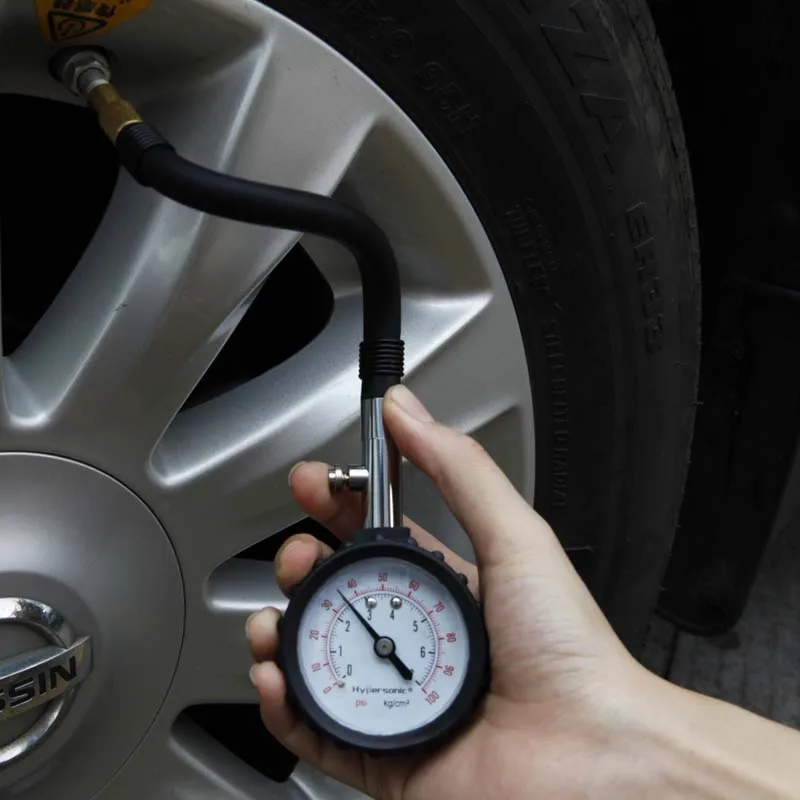 The disadvantages include the inability to determine the deviation before the movement has begun, and the operation occurs only when there is a large difference in readings.
The disadvantages include the inability to determine the deviation before the movement has begun, and the operation occurs only when there is a large difference in readings.
Deviation from the standards recommended by the car manufacturer will inevitably have some undesirable consequences.
⚠️ Important! Prolonged driving on flat tires deforms them and makes them unusable for further use.
An under-inflated tire becomes too soft, causing it to lose its shape and literally collapse. The entire weight of the vehicle falls on the flexible sidewalls, especially during maneuvering, which leads to certain negative consequences:
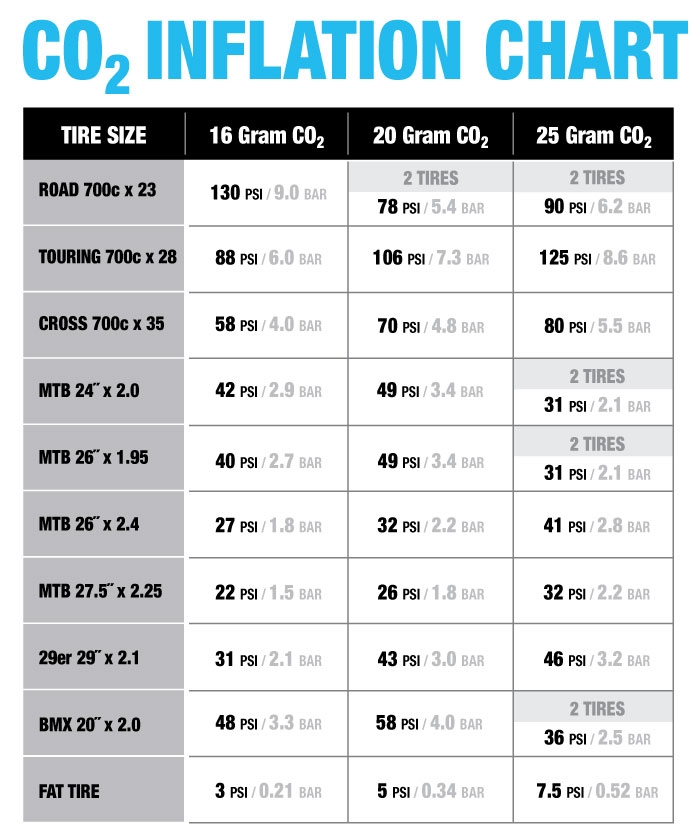
When is it useful to reduce tire pressure?
In some cases, deflated tires can help overcome difficult road sections where the machine is likely to skid or load. Due to the part of the sidewall, which temporarily becomes a continuation of the tread, there is an increase in the contact patch with the surface. Thanks to this solution, as well as the presence of many (especially off-road tires) side lugs, it is possible to improve the vehicle's cross-country ability by an order of magnitude. The same "life hack" is used to reduce slippage at the start in races of 402 meters (drag racing), which reduces the time to overcome the distance.
A flat tire helps to overcome obstacles such as:
⚠️ Important! To pass a difficult section of the road, it is enough to release air at 1.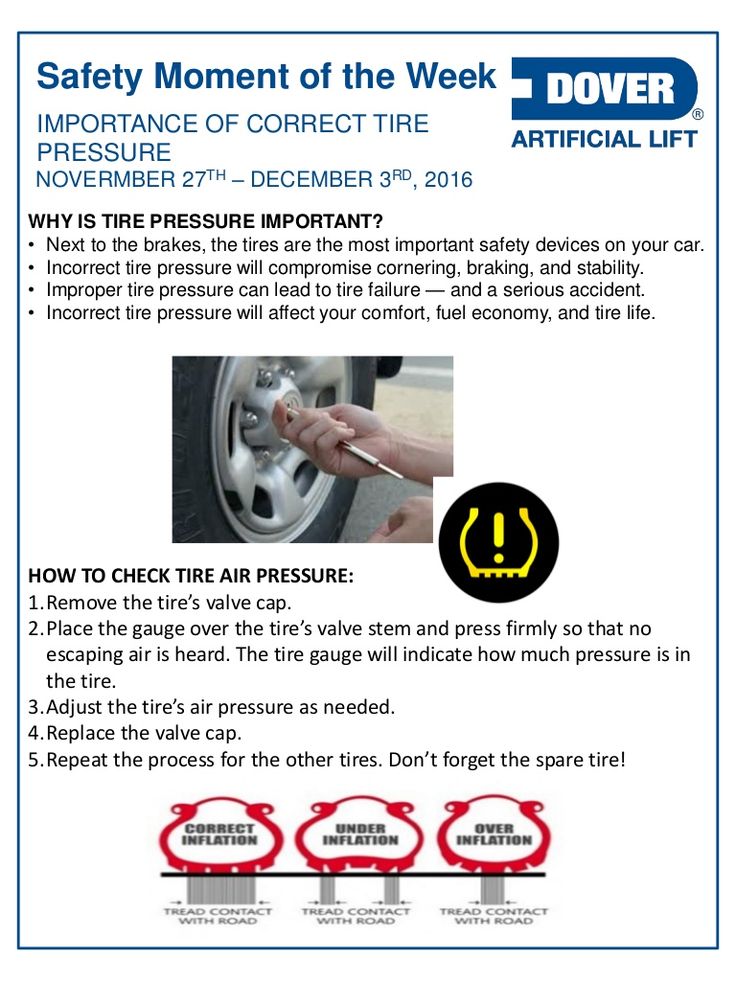 0-1.5 atm (depending on the car, tire size and road conditions). You need to move at a speed of no more than 10-15 km / h, so as not to damage the discs and tires. After overcoming a difficult area, the pressure should be increased to the level recommended by the vehicle manufacturer. Driving on a hard surface on a half-flat tire is dangerous and fatal for the tire.
0-1.5 atm (depending on the car, tire size and road conditions). You need to move at a speed of no more than 10-15 km / h, so as not to damage the discs and tires. After overcoming a difficult area, the pressure should be increased to the level recommended by the vehicle manufacturer. Driving on a hard surface on a half-flat tire is dangerous and fatal for the tire.
The tread part of an inflated tire from a flat and balanced tire becomes convex in the middle, which reduces the contact patch and leads to a number of undesirable consequences:
When is high tire pressure useful?
Car manufacturers recommend slightly increasing the pressure level before a long road trip and when the car is fully loaded (increasing the pressure gauge on the rear axle helps in transporting goods). Also, drivers with low-profile tires can increase the pressure a little before entering a rough road to save the discs.
⚠️ Important! Follow the recommendations in the owner's manual of the vehicle. It indicates how to pump a tire in a particular operational case.
⚠️ Important! The difference in pressure gauge readings in tires on the same axle is strictly prohibited. The difference between the axles (in pairs) should not go beyond the limits prescribed by the vehicle manufacturer.
Different tire pressure gauges cause safety effects:

When the ambient temperature changes, it also changes inside the wheel. On average, when changing by 8-10 ° C, the pressure gauge needle deviates by 0.1 atm. This feature must be taken into account when operating the car and with greater care to monitor the indicators of measuring instruments when the temperature changes.
After switching to winter tires, pressure measurements must be taken with particular care. It is best to check with the onset of the first frosts and when the thermometer drops significantly below zero. Most likely, it will be necessary to inflate the wheels additionally to compensate for the effect of negative temperatures on the decrease in the level of atmospheres.
Features of maintaining the necessary pressure gauge readings in winter:
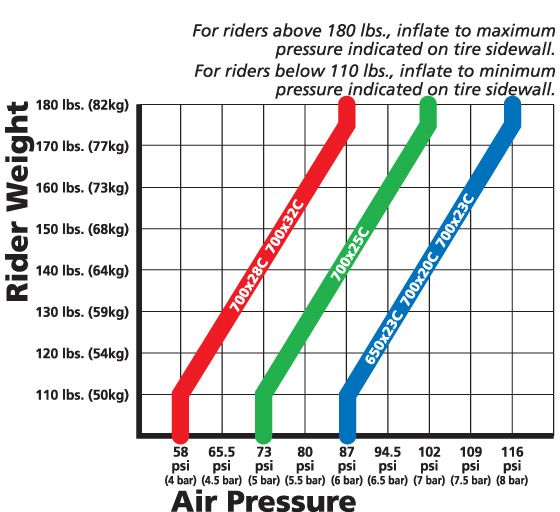
In the hot season, it is important to prevent pumping the wheels, because under the influence of elevated temperature, the air inside expands and the pressure gauge needle rises. In addition to the weather itself, additional heating is affected by the speed of movement and contact with heated asphalt on especially hot days.
To maintain the correct air level in the tires in summer, consider:

Car manufacturers advise to take measurements at least once a month, and for greater safety, it is advisable to check the pressure gauge once every 2 weeks.
However, in some situations the wheels should be checked out of the box.
An extraordinary tire pressure check is recommended in the following cases: Let's answer a few common questions that motorists ask when analyzing the readings of the pressure gauge. "Is it worth filling tires with nitrogen?" Answer. It's up to you, but it has some advantages: temperature fluctuations affect the performance less, and the natural loss of atmospheres is slower. 8. Answers to common questions
